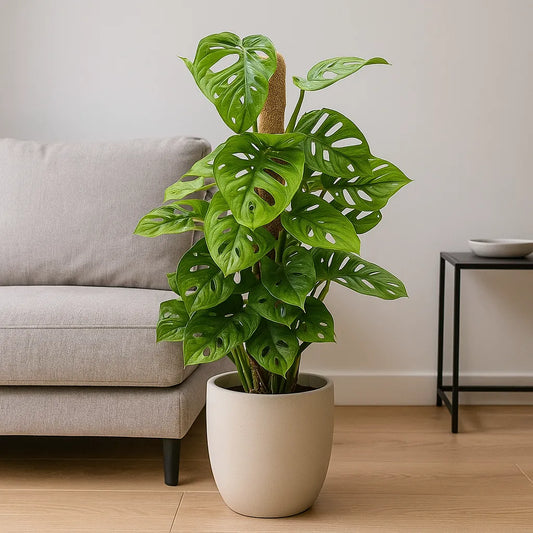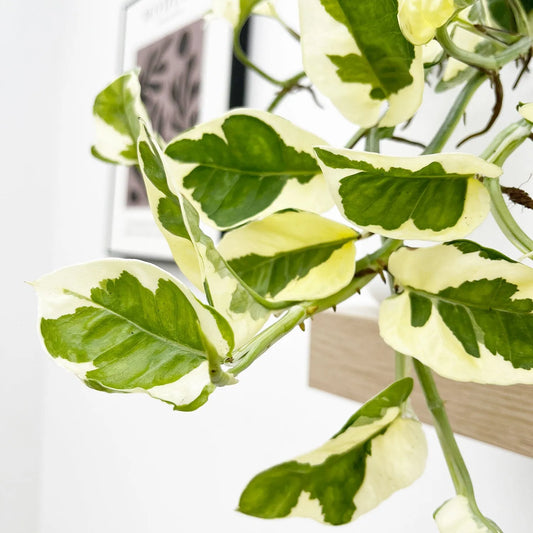How to grow your own Potatoes
Growing potatoes in your own garden is a healthy, easy and low cost way to grow your own food. It’s surprisingly easy to grow potatoes in your garden so, whether you’re new to gardening or you’re a seasoned gardener looking to get into growing your own veg, read our guide to find out more.
Types of potato to grow
There are three main types of potato that you can grow in your garden:
-
First early or ‘new potatoes’ - these are the earliest to crop in June and July
-
Second earlies - these take a few more weeks to mature than first earlies and can be harvested in July and August
-
Maincrop potatoes - these take the longest to mature are are harvested between August and September.
How to grow your own potatoes: A step-by-step guide
Preparing your seed potatoes
Seed potatoes are available to buy from the late winter onwards. Before you come to plant seed potatoes, you will need to complete a process called chitting. This involves letting the seed potatoes you have grow shoots and will give you a much bigger potato crop when it comes to harvesting them. To do this, we recommend putting the seed potatoes in trays or egg cartons and standing them in a cool, light spot until you can see 1-2cm long shoots. This will take around six weeks so remember to do this well before the potatoes are due to be planted!
The best time to plant your seed potatoes will depend on the type of potato you’re growing:
-
First earlies - late March
-
Second earlies - early to mid-April
-
Maincrop - mid to late April
There are also many types of potato variety so make sure you know which ones you want to eat before buying seed potatoes!
The time of month or year you plant your potatoes will depend on where in the UK you are based. In colder regions you will need to plant slightly later but you can plant slightly earlier than the above times in milder regions.
Planting potatoes
You can grow your home grown potatoes in any type of soil but richer soil will help you to get as big a crop as possible. To help provide a richer soil, mix plenty of well-rotted organic matter such as garden compost in in the area you want to plant them.
Maincrop potatoes are better off planted in the ground but, if you want to grow early or salad potatoes, you can place them in large pots or bags.
Once you’re ready to start planting your potatoes, follow these three simple steps:
Step 1: Prepare the soil in your garden by digging it over and removing any weeds. You will then need to dig straight trenches to plant your potatoes in 12cm deep and 60cm apart. Remember that first early and second early potatoes can be grown in a large bag on a patio or balcony, you will just need to keep covering them with compost as they grow.
Step 2: In the spring, and at the right time for the type of potatoes you’re growing, plant them 30cm apart and cover them over with soil to fill the trench.
Growing your potatoes
As your potato plants grow, they will need earthing up regularly in order to protect their early shoots from any frost damage and to make sure the potatoes below are not exposed to too much sunlight which will turn them green and make them poisonous. Green potatoes are no longer edible so it’s important to make sure they’re not exposed to sunlight. A few weeks after planting, check in on your potatoes to see how they’re doing and take any necessary steps to maintain them or help them to grow well.
Once the stems get to around 23cm in height, you will need to draw soil up around them to create a ridge around 15cm high. As they grow, this process will need to be repeated several times with the final height of the ridge around 20-30cm.
Make sure you keep your potatoes well watered during dryer conditions once they start to form tubers to give them the best chance of thriving.
Harvesting potatoes
There is an ideal time to harvest your potatoes but it can also depend on when you want them. New potatoes can be harvested throughout the summer to enjoy in salads and for barbecues but, if you’d prefer to harvest them and eat them in the winter, you can leave them in the ground until the first frost and their leaves have dried up. This will give the potatoes a chance to get all the nutrients they need and will keep them safe in the ground until you’re ready to harvest them.
Ideal harvesting times include:
-
First earlies - June and July
-
Second earlies - July and August
-
Maincrop - August through to October
Once you have decided to harvest your potatoes, lay a burlap sack, fleece or an old blanket on the ground and use a gardening fork to uncover them. Drive your fork down at the base of the drawn up soil and gently lever under the potato mound and lift. Doing this will reveal a mass of potatoes for you to pick out, wash and eat.











Leave a comment
Please note, comments need to be approved before they are published.